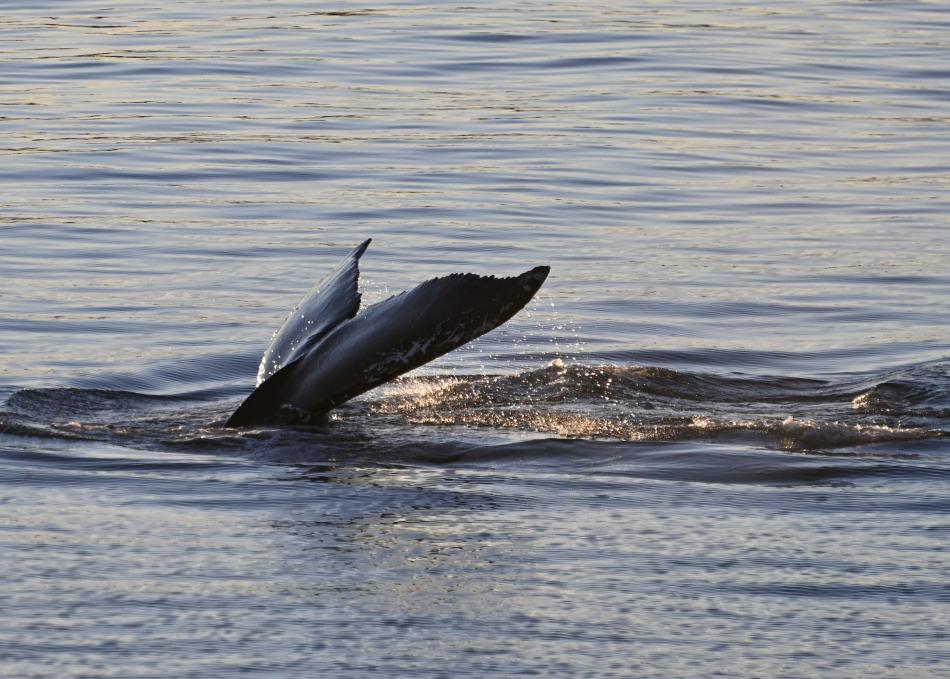Friday, 6 December 2024
- CLASSIC WHALE TOUR | 13:00
Today's whale watching tour is on schedule from Reykjavík this afternoon! Remember to dress according to weather and feel free to borrow our thermal overalls if needed!
CLASSIC WHALE WATCHING | 13:00
Report from Eldey: In this cold, clear sunny afternoon, we sailed out into the smooth sea of Faxafloi bay, facing the white mountains of Esja and Akrafjall. Lucky to us, we didn't need to venture too far, as we quickly found 2 humpback whales surrounding the islands of Viðey and Lundey. Staying with each one at a time, we had the chance to see 2 very different behaviours: one kept coming up and down for over 30 minutes, seemingly feeding on the schools of sprat who come to Faxafloi in the winter; the other one was resting, with almost no activity but a small blow every once in a while, hovering at the surface without much movement. As the sun started to set over the appearing clouds, we started heading back home, luckily noticing small pods of harbour porpoises on our way.
- Mariana "Ana-Maria" Veludo
Bird species seen today include:
cormorant, lesser black-backed gull, black guillemot, black-headed gull, Icelandic gull, glaucous gull,
Wildlife encountered today:

The Humpback Whale is quite spectacular undergoing the longest migration of any mammal (5176miles/8334km one way), attracting females by singing to them and of course their energetic nature. On many occasions humpbacks have been seen breaching, tail slapping, fin slapping, blowing bubbles and spy hopping just to mention a few. The humpback is also one of the larger whales we encounter

The Harbour Porpoise is the smallest and most abundant cetacean around Iceland. They are usually shy but occasionally they come and play around the boats. They can be relatively hard to spot from a distance due to their size and their abundance depends entirely on the food availability of our shores since they are opportunistic feeders.

Grey seals are generally distinguished from harbour seal by their straight head and fewer spots. Males are darker and larger than the females who tend to be a silver, grey or brown in color. Grey seals and harbour seals are the only seals that have been reported breeding in Icelandic waters.












